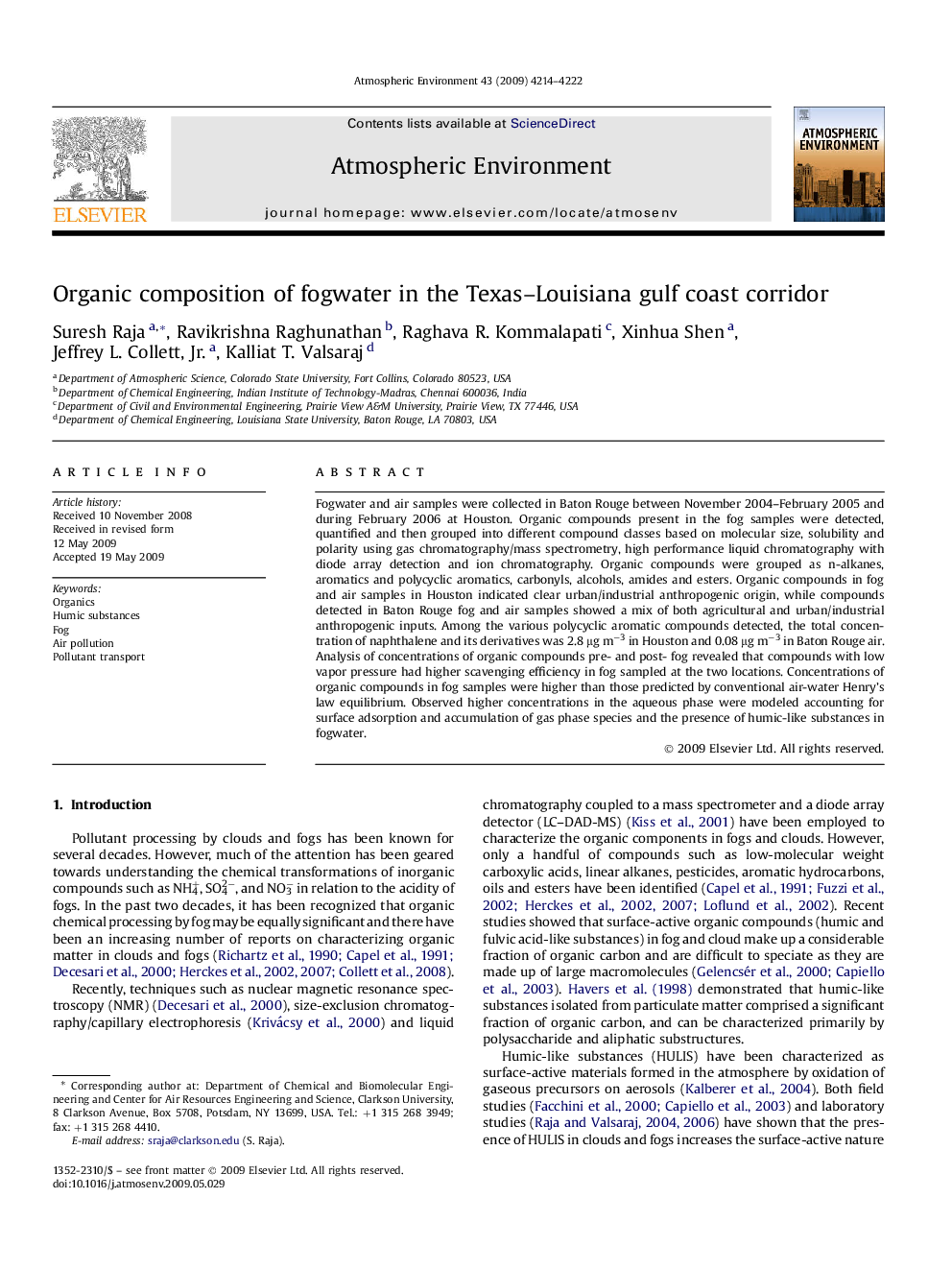| Article ID | Journal | Published Year | Pages | File Type |
|---|---|---|---|---|
| 4441575 | Atmospheric Environment | 2009 | 9 Pages |
Fogwater and air samples were collected in Baton Rouge between November 2004–February 2005 and during February 2006 at Houston. Organic compounds present in the fog samples were detected, quantified and then grouped into different compound classes based on molecular size, solubility and polarity using gas chromatography/mass spectrometry, high performance liquid chromatography with diode array detection and ion chromatography. Organic compounds were grouped as n-alkanes, aromatics and polycyclic aromatics, carbonyls, alcohols, amides and esters. Organic compounds in fog and air samples in Houston indicated clear urban/industrial anthropogenic origin, while compounds detected in Baton Rouge fog and air samples showed a mix of both agricultural and urban/industrial anthropogenic inputs. Among the various polycyclic aromatic compounds detected, the total concentration of naphthalene and its derivatives was 2.8 μg m−3 in Houston and 0.08 μg m−3 in Baton Rouge air. Analysis of concentrations of organic compounds pre- and post- fog revealed that compounds with low vapor pressure had higher scavenging efficiency in fog sampled at the two locations. Concentrations of organic compounds in fog samples were higher than those predicted by conventional air-water Henry's law equilibrium. Observed higher concentrations in the aqueous phase were modeled accounting for surface adsorption and accumulation of gas phase species and the presence of humic-like substances in fogwater.
